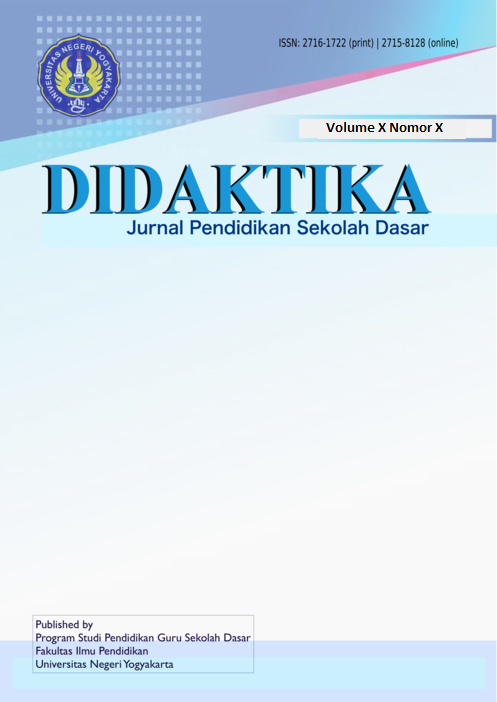Development of Interactive Video on Material Changes to Improve Learning Outcomes of Elementary School Students
DOI:
https://doi.org/10.21831/didaktika.v7i1.70129Abstract
Abstrack
In primary school science learning, videos are frequently used as a medium. However, there are still many teachers who do not utilize interactive videos. Some teachers face difficulties in independently developing videos. Self-made videos can be tailored to the content, and appropriate material can encourage students to be active, creative, and independent. Therefore, the development of interactive videos is needed in teaching, particularly in subjects like the change of states of matter. The development of interactive videos is expected to make students more active, thereby improving learning outcomes. The aim of this research is to develop interactive videos believed to be valid by experts, practical for teachers and students, and effective in enhancing the learning achievements of primary school students. The research type is development research and development and using the ADDIE development model. Data was collected from media and material validators in the interactive video, as well as from teachers and fifth grade students. Data collection techniques involved observation, interviews with teachers, questionnaires, and written tests. According to content experts, the material's validity in the video is 75%, categorized as moderately valid. According to media experts, the validity of the media is 96.87%, classified as highly valid. The practicality level of the interactive video, according to teachers and students, is 100%, considered highly practical. Based on effectiveness testing, the interactive video significantly influences improving student learning outcomes
Keywords: Interactive video, Material Changes Form Objects, Learning Outcomes
Downloads
Published
How to Cite
Issue
Section
Citation Check
License
- Authors retain copyright and grant the journal right of first publication with the work simultaneously licensed under a Creative Commons Attribution License that allows others to share the work with an acknowledgement of the work's authorship and initial publication in this journal.
- Authors are able to enter into separate, additional contractual arrangements for the non-exclusive distribution of the journal's published version of the work (e.g., post it to an institutional repository or publish it in a book), with an acknowledgement of its initial publication in this journal.
- Authors are permitted and encouraged to post their work online (e.g., in institutional repositories or on their website) prior to and during the submission process, as it can lead to productive exchanges, as well as earlier and greater citation of published work.







